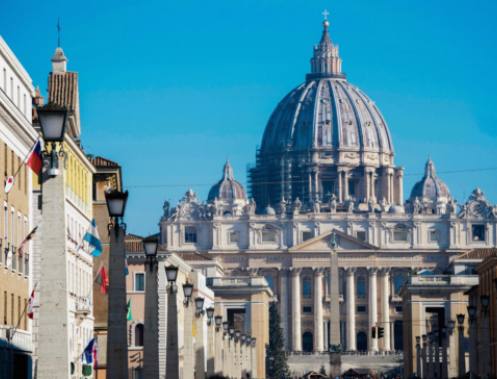The Pietà by Michelangelo is one of the most famous and revered works of art in the world. Created by the legendary Italian artist Michelangelo during the Renaissance period, this masterpiece embodies beauty, emotion, and spiritual significance. With its intricate details, flawless craftsmanship, and profound symbolism, The Pietà continues to captivate and inspire visitors to Vatican City, where it is prominently displayed in St. Peter's Basilica. However, despite its universal acclaim, The Pietà has also been embroiled in controversies and faced challenges in terms of restoration and preservation. In this article, we delve into the origins, techniques, symbolism, controversies, and conservation efforts surrounding this iconic sculpture.

Michelangelo's Inspiration for The Pietà
Michelangelo's inspiration for The Pietà came from his deep religious beliefs and his desire to create a work of art that captured the moment of Mary holding the body of her son, Jesus, after his crucifixion. The artist was greatly influenced by classical sculptures and Byzantine art, which can be seen in the proportions and emotional intensity of the figures in The Pietà. Additionally, Michelangelo was inspired by the idea of beauty as a reflection of divine perfection, and he sought to convey this in his depiction of Mary and Jesus. The artist's profound religious faith and his quest for artistic perfection drove him to create one of the most iconic and moving sculptures in art history.
Techniques Used in Creating The Pietà
The techniques used in creating Michelangelo's famous sculpture, The Pietà, demonstrate the artist's unparalleled skill and mastery of marble. Michelangelo utilized the method of "non finito" or unfinished details to achieve a sense of realism and emotion in his sculpture. He also employed the technique of contrapposto, where the figure's weight is shifted onto one leg, creating a naturalistic and dynamic pose. Additionally, Michelangelo paid meticulous attention to anatomical accuracy, capturing the delicate details of the figures' musculature and drapery with precision. The use of light and shadow in the sculpture also adds depth and drama to the composition, further highlighting Michelangelo's technical expertise in creating The Pietà.
Symbolism in The Pietà
The Pietà by Michelangelo is rich in symbolism that adds depth and meaning to the powerful sculpture. One of the key symbols in The Pietà is the figure of Mary cradling the body of Jesus. This gesture of holding her son's lifeless body conveys her deep sorrow and grief, symbolizing the sadness and loss experienced by all mothers who have lost a child. Mary's expression of serenity and acceptance also symbolizes her acceptance of God's will and her faith in the resurrection.
Another significant symbol in The Pietà is the youthful and serene face of Jesus, which represents his divine nature and eternal peace. Despite the wounds and pain depicted in his body, Jesus' face remains calm and composed, symbolizing his triumph over death and sin. This contrast between the suffering body and peaceful face conveys the idea of redemption and salvation through Christ's sacrifice.
The drapery in The Pietà is also symbolic, as it represents Mary's purity and innocence, as well as the divine grace that surrounds Jesus. The soft and flowing lines of the fabric suggest a sense of movement and life, symbolizing the eternal love and compassion of God.
Overall, The Pietà is a powerful and emotive work of art that conveys profound spiritual and religious symbolism, inviting viewers to reflect on themes of sorrow, redemption, and faith. Michelangelo's skillful use of symbolism in the sculpture adds layers of meaning and invites contemplation on the mysteries of life, death, and the divine.
Controversies Surrounding The Pietà
The Pietà by Michelangelo has faced several controversies throughout its history. One of the major controversies surrounding the sculpture is the debate over the true identity of the figure of Mary. Some art historians believe that Michelangelo portrayed Mary as a young and beautiful woman, which deviates from the traditional depiction of Mary as older and more matronly. This departure from convention sparked criticism and debate among art enthusiasts.
Another controversy surrounding The Pietà is the damage caused to the sculpture during an act of vandalism in 19A mentally disturbed man attacked the sculpture with a hammer, causing significant damage to Mary's nose, eyelids, and arm. The incident sparked outrage and raised questions about the security measures in place to protect such valuable works of art.
Additionally, there have been debates surrounding the authenticity of certain copies and replicas of The Pietà. Some experts believe that certain replicas may have been created without proper authorization, leading to questions about the ethical implications of producing and selling unauthorized copies of a renowned masterpiece.
Overall, the controversies surrounding The Pietà have added an additional layer of complexity to the interpretation and appreciation of this iconic work of art.
Restoration and Preservation of The Pietà
The Pietà by Michelangelo, housed in St. Peter's Basilica in Vatican City, has undergone several restoration and preservation efforts over the years. The first major restoration took place in 1935, during which time the statue was cleaned and repaired due to damage caused by pollution and environmental factors. Another restoration was carried out in 1999, when the Pietà was attacked by a vandal, resulting in significant damage to the statue's left arm and nose. Skilled artisans carefully restored the damaged areas, ensuring the masterpiece retained its original beauty. Thanks to these restoration and preservation efforts, future generations will continue to marvel at Michelangelo's iconic Pietà for years to come.
